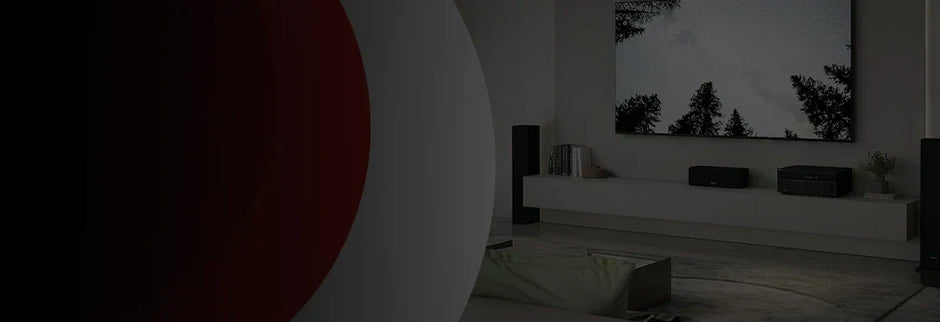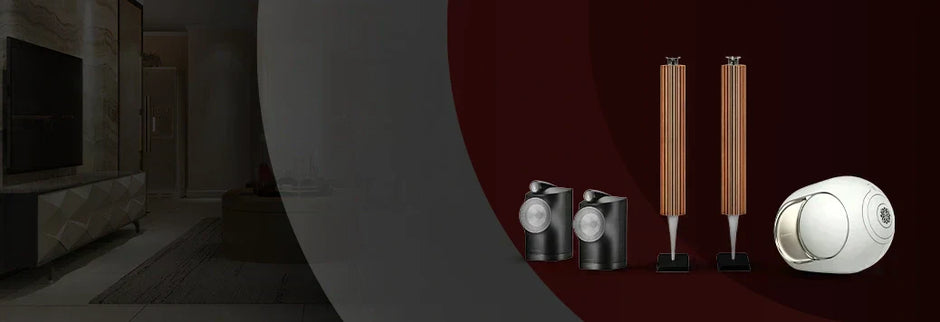AV receivers are the key components in home theater systems, and the process of AV receiver troubleshooting can help combat common issues that recur when it comes to audio and video.
It receives audio and video signals from different sources, such as a TV, Blu-ray player, gaming console, and streaming devices, and amplifies and processes them before sending them to your speakers or TV. Understanding AV receivers and why you need one is important.
It offers several benefits that make it worthwhile getting an AV Receiver or an AV amplifier.
An AV receiver comes with a built-in amplifier that can power your speakers, resulting in a better sound quality. They connect multiple devices to your TV and speakers using a single cable, thereby cutting down the hassle and simplifying connections.
Also AV receivers provide enhanced home cinema experience with its wide range of features, including support for different audio and video formats, Bluetooth, Wi-Fi, voice control, and more. AV receivers also provide the room correction feature so you can calibrate your audio for a specific room.
However, AV receivers, being complex audio-video devices, can encounter various issues.
Here are some common AV receiver issues and suggestions on AV receiver troubleshooting:

No Power:
- Check the Power Source: Ensure that the receiver is plugged into a working power outlet. You could try a different outlet and ensure the power cable is securely connected.
Remote Control Issues:
- Check Batteries: If the remote is not working, replace the batteries and ensure they are inserted correctly.
- Reset Remote Control: Some remotes may need to be reset. Consult the receiver's manual for instructions on how to reset the remote control.
Bluetooth or Network Connectivity Issues:
- Update Firmware: Ensure that the receiver's firmware is up-to-date. Some issues can be resolved through firmware updates.
- Reconnect Bluetooth Devices: If using Bluetooth, disconnect and reconnect your devices. Ensure the receiver is set to the correct Bluetooth input.
Audio/Video Sync Issues:
- Adjust Audio Delay: Some AV receivers enable you to adjust audio delay to sync with video. Explore the receiver's settings for audio delay or lip sync adjustments.
Overheating:
- Check Ventilation: Ensure that the receiver has proper ventilation. Clear any obstructions around the vents and consider using a fan to improve airflow.
- Reduce Volume or Power Output: High volumes or excessive power output can lead to overheating. Reduce the volume or consider using an external cooling solution.
Speaker Protection Mode:
- Check for Short Circuits: If the receiver goes into protection mode, check speaker wires for short circuits or loose strands. Disconnect speakers one by one to identify the problematic speaker or wire.
No Sound from Specific Channels:
- Check Speaker Wiring: Inspect the wiring for the affected speakers. Swap speakers or wires to determine if the issue is with the receiver or the speaker.
No Audio or Low Volume:
- Check Speaker Connections: Verify that all speaker wires are properly connected to the receiver and speakers. Make doubly sure that there are no loose connections or frayed wires.
- Speaker Settings: Check the receiver's speaker settings to ensure that the correct speaker configuration (size, distance, crossover) is selected.
No Video or Poor Video Quality:
- Check Video Connections: Inspect HDMI, component, or other video cables for a secure connection. Replace any damaged cables, if you find any.
- Input Selection: Confirm that the receiver is set to the correct input source for your video device (e.g., Blu-ray player, gaming console).
Factory Reset:
- Perform a Factory Reset: As a last resort, consider performing a factory reset on the AV receiver. Refer to the user manual for instructions on how to reset the receiver to its default settings.
Always consult the user manual that came with your AV receiver to know more about the appropriate AV receiver troubleshooting steps and guidance. If issues persist, and the receiver is under warranty, it is best to contact the manufacturer's customer support for assistance or to seek professional repair services.
FAQs
1. Why is my AV receiver not turning on?
If your AV receiver won't power on, the issue might be a blown fuse, faulty power cable, or a problem with the power supply. Start by checking the power connections and the fuse. If the issue persists, it could be due to an internal component failure, requiring professional repair or replacement. Learn more about fixing power issues in our comprehensive guide.
2. How can I resolve HDMI connection problems with my AV receiver?
HDMI problems can cause no video or audio signals. Ensure that your HDMI cables are high quality and firmly connected. Also, check the HDMI ports on both the receiver and the source device. A quick fix is to reset both devices, update firmware, or check if the receiver is set to the correct HDMI input.
3. Can I fix my AV receiver myself or should I call a technician?
Many AV receiver issues, such as incorrect settings or minor connection problems, can be fixed at home with troubleshooting. However, if you're dealing with internal component failure, complex wiring issues, or persistent problems after troubleshooting, it’s best to consult a professional technician.
4. How often should I maintain my AV receiver?
To keep your AV receiver functioning optimally, perform regular maintenance such as cleaning dust from vents, checking cables for wear, and ensuring software is up to date. It's also a good idea to test your setup occasionally to catch issues early. Regular checks can prevent common AV receiver problems from escalating.
5. How do I troubleshoot sound distortion on my AV receiver?
Sound distortion can result from incorrect audio settings, speaker impedance issues, or a malfunctioning receiver. Verify that your speakers match the receiver’s recommended impedance, reset the receiver’s audio settings, and check the cables for any signs of damage. If the issue continues, consider consulting a technician.







